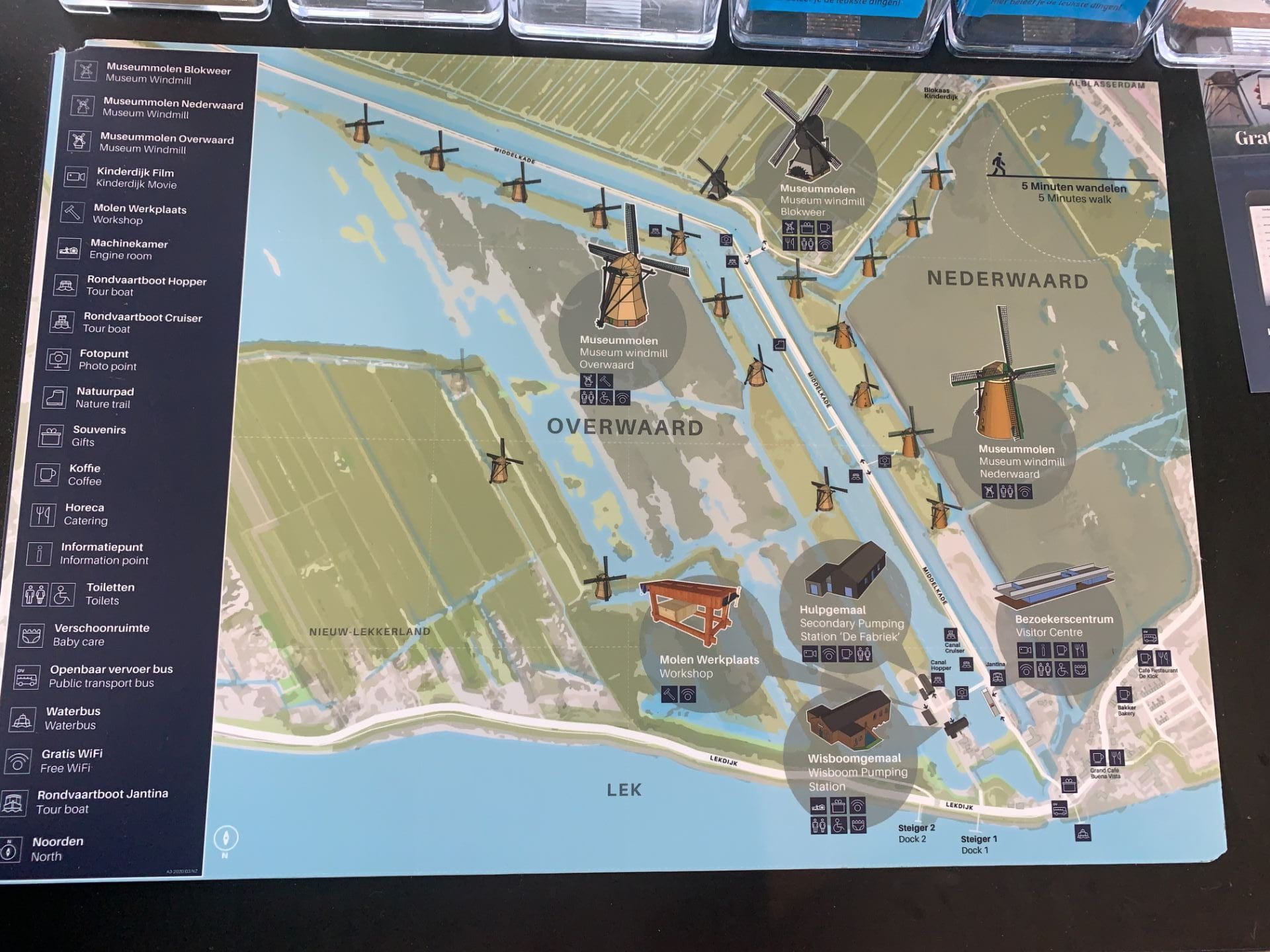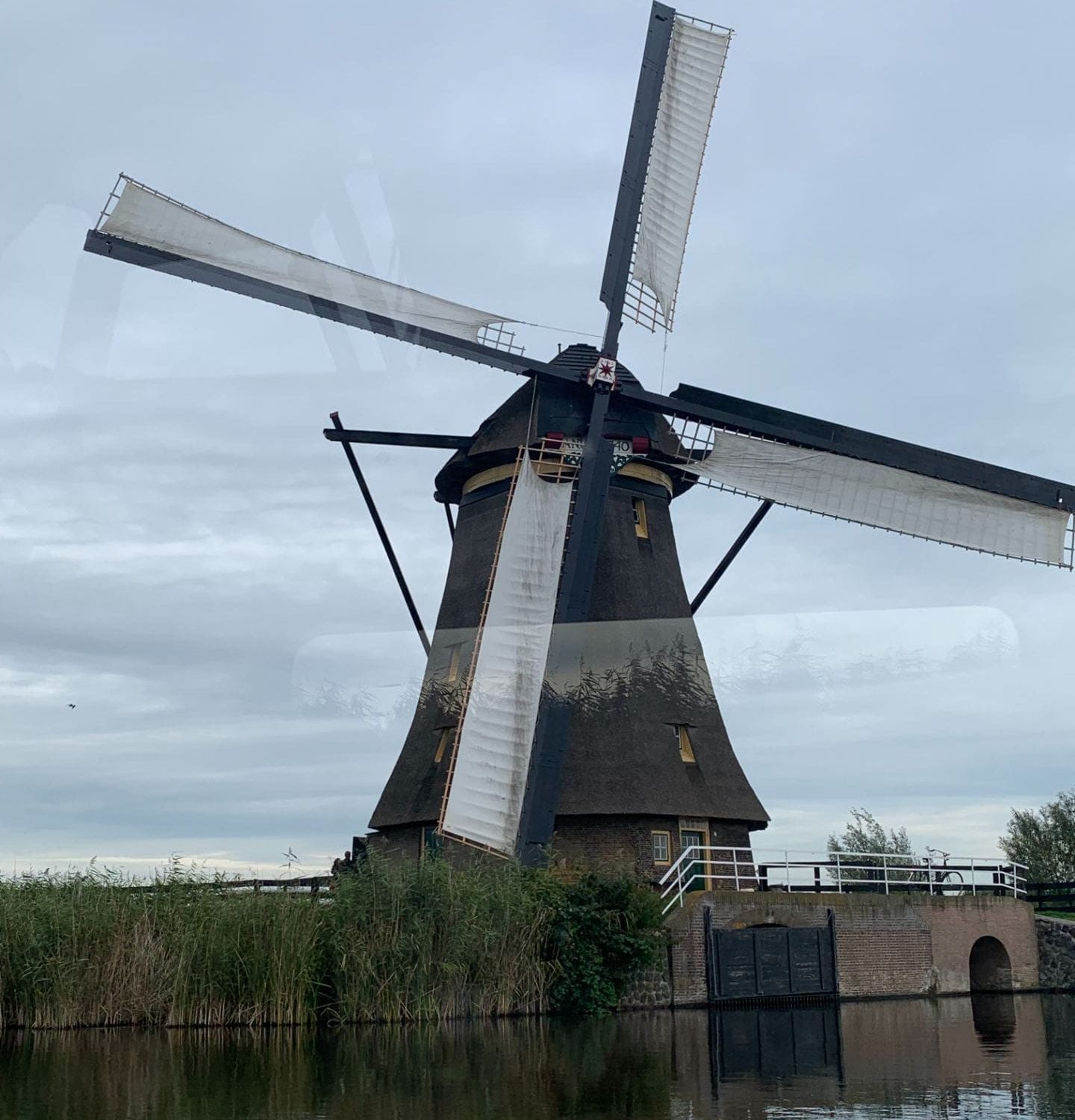From the 16th to the 30th of October I visited Rotterdam, Paris and Amsterdam. I took advantage of the historical and cultural richness of Rotterdam and decided to embark on an hour long excursion to a nearby world heritage site called Kinderdijk.

As can be seen from the map above, each visitable windmill is proportionately spread out across the ‘dijk’s (an embankment built as a barrier against the sea). In total, in order to visit all 3 windmills, I hiked for around an hour. The first windmill I visited was called ‘Nederwaard‘ and it blew me away. I learned that families used to live in these windmills and some people still do. As can be seen in this video, the windmills are multi leveled and provide accommodation and space for more than one person.
After exploring this windmill, I hiked briefly to the next windmill which was called ‘Blokweer‘. To me, this windmill somewhat resembled a bird feeder which was quite interesting. Adjacent to this windmill, there was a miniature farm which consisted of 2 goats, 2 rabbits, 3 chickens, and plenty of home-grown vegetables which suggested that a farmer lived here and most likely without children.
My assumptions were correct as I was greeted by the farmer upon arrival. When I walked inside of the windmill, I realized that it was much smaller than the last windmill. With the internal mechanism of the windmill taking up a larger portion of the space, there was less space left over for a family to live within. The fact that every windmill was personalized and unique overruled the cold temperatures of under 10 degrees celsius which is quite foreign to me. Lastly, I had to hike back to the starting point in order to walk on the other side of the water and reach the ‘Overwaard’ windmill.
Sadly I do not have any images or footage of this windmill as I was entirely invested in the information tour that was given by the staff. The first part of the tour, given to English speakers, taught me about the construction of this particular windmill. This tour was given in a shed that was placed next to the windmill and it consisted of a display of both the tools that were used to build this windmill and also personal items that belonged to previous habitants of this windmill. The second part of this tour took place directly outside of the windmill and was given by a man who currently lives in a different windmill. He demonstrated how to set up the windmill so that it is ready to work and also explained what the role of the windmill is. He explained that the windmills were built in order to keep the low-lying lands dry. The windmills ensure that the water is drained and does not flood the land which is necessary as the Netherlands is 26% below sea level. These windmills were also used for grinding grain, producing electricity, and pumping water.
LO3: Demonstrate how to initiate and plan a CAS experience
I felt as though I demonstrated how to initiate and plan a CAS experience very well as I planned this day-trip by myself. Courtesy of my parents, I was tasked with planning what trams to take to the pier and what boats to take to get to the windmills. In addition to this, the idea of visiting these particular windmills was also my idea as I had researched ‘things to do while in Rotterdam’ prior to traveling. Being in a foreign country and coming from Sri Lanka, which lacks safe and organized public transport, the idea of relying solely on public transport slightly intimidated me. Nevertheless, I still executed this plan to perfection as we arrived on time and never missed a boat or tram.
Supervisors: Simrin Singh & Andrew Hurd
